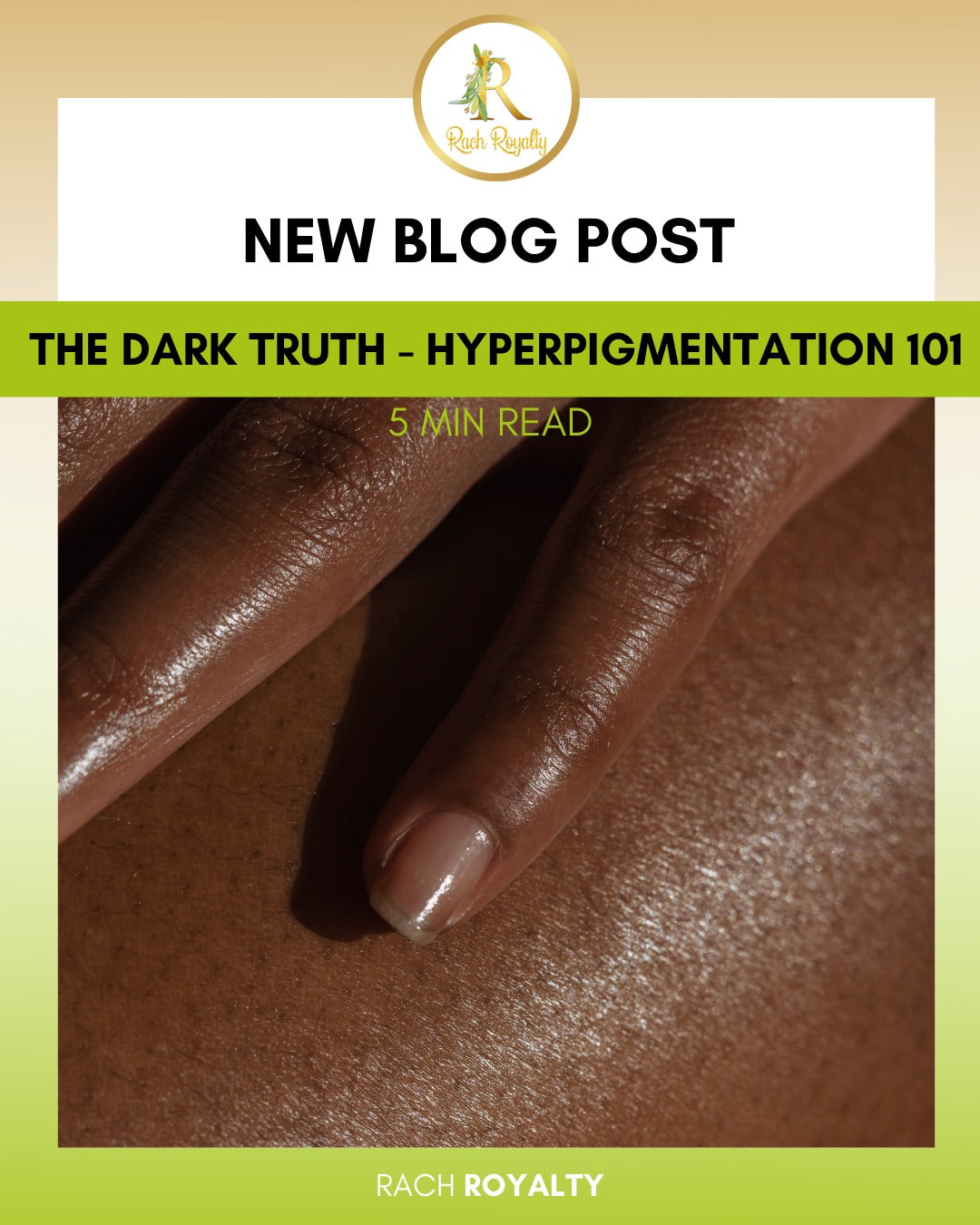
The Dark Truth - Hyperpigmentation 101
Share

Hyperpigmentation is something we all know about.
What causes it? Can it be prevented?
Let’s find out.
What is melanin?
Melanin refers to a natural skin pigment that determines the skin, eye and hair colour of different persons depending on the amount of melanin that they have.
The skin cells that produce melanin are known as melanocytes.
What’s interesting is that everyone has the same number of melanocytes, some people just produce more melanin than others.
When less melanin is produced, the hair, skin and eye colour will be light.
When more melanin is produced, the hair, skin and eye colour will be dark.
What causes some people to produce more melanin? Genes.
Melanin & the Sun
When persons are in the Sun they naturally produce more melanin and this helps protect the body from harmful UV
When persons are in the Sun they naturally produce more melanin and this helps protect the body from harmful ultraviolet rays (UV rays). Here's an excerpt from our Debunking Self-Care Myths Blog:
'While darker skin tones have more melanin which thus offers more natural protection it is not immune from sun damage. Darker skin may not sunburn as easily as lighter skin, but is still at risk for skin cancer.
Studies show that darker skin tones have a natural SPF of ~13. As stated in our blog on sunscreen, an SPF of at least 30 is needed. Based on these figures you can see that the natural protection black people have is insufficient to adequately protect the skin.
Learn more about the basics of protecting your skin in our blog on sunscreen.'
Now let’s delve into the different types of melanin. They are:
- Eumelanin
- Pheomelanin and
- Neuromelanin
Melanocytes are what produces eumelanin and pheomelanin. There are two types of Eumelanin, brown and black, and they contribute to producing dark hair, eye and skin colours. When one has black and brown hair it means that there has been a mix of black and brown eumelanin while blonde hair results from small amounts of brown eumelanin and no black eumelanin.
Pheomelanin is what provides colour to the ‘pink’ parts of the body in some persons. The presence of red hair means that pheomelanin is present in the same amount as eumelanin.
On the other hand, neuromelanin governs the colours of neurons and is found in the brain.
Now we see that melanin is responsible for pigment. Consequently, where there are disorders with melanin it may result in: albinism (little melanin present), melasma (brown patches on face), vitiligo (loss of melanocytes) or parkinson’s disease (reduction of neuromelanin in brain).
What does this have to do with hyperpigmentation??
Well, an overproduction of melanin is known as hyperpigmentation. It’s important to have a solid understanding of the role melanin plays before you can understand how it relates to hyperpigmentation.
An overproduction of melanin (hyperpigmentation) does not typically form a risk for serious concern; however, several persons may wonder why areas of their skin are darker than others.
There are several reasons for darker than usual skin, some medically serious and some not. One less serious reason is that the person has hyperpigmentation.
Hyperpigmentation leads to patches of skin that are darker than other areas. Excess melanin production can lead to four different types of hyperpigmentation.
- Melasma
- Post-inflammatory hyperpigmentation
- Sun damage
- Medical conditions
We'll delve into each type in our subsequent blog.
Can I get rid of hyperpigmentation?
Yes you can. Common cosmetic products that reduce hyperpigmentation include: kojic acid, Vitamin A products and Alpha Hydroxy Acids. Other methods that may be used are chemical peels from licensed professionals, laser therapy, microdermabrasion or dermabrasion.
Regardless of the method used what's most important is to follow up with that treatment with a moisturizer to avoid skin dryness and increase the cell turnover (this is the 'new skin' that will appear after treatment) and to follow up with at least 30+ SPF to prevent skin damage or worsening of dark spots.
#NaturalSkincareProducts #Jamaicanskincareproducts
